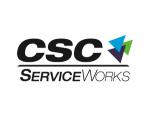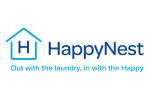CHICAGO — Earlier this year, we introduced “Incorporating Pickup and Delivery,” a three-part series exploring the hot service trend. Part 1 in February examined the labor and workflow considerations tied to such a service through the eyes of a trio of laundry owners. Part 2 in May featured several more owners who assessed the use of delivery vehicles, computer software and potential add-ons the new service can require.
As our series concludes this month, laundry service owners who contributed earlier return to answer our questions about marketing and promoting their service.
Q: What tools, methods and/or platforms do you use in marketing your PUD service to prospects and existing customers?
Colleen Unema, owner of Brio Laundry, Bellingham, Washington: Sounds crazy, but we use radio sponsorships. Usually contests and events where we get mentioned over and over. I script the mentions so they include our name and one sentence regarding services offered. We are in a rural area, so we draw from a very large geographical area for marketing. Our pickup and delivery is actually a pretty tight circle around our store; unless they are a regular customer, (because then) we will add them to our list no matter how far away.
Laura Simoes, co-owner of Wash Street, a laundry services company based in Manchester, New Hampshire: Our custom-wrapped vans act as mobile billboards in the communities we serve.
Lloyd Silver, owner of Sage Laundry, Woodland, California: I’m a big believer in having data and being able to use that data to drive good marketing. So we adopted ActiveCampaign as not just an email platform but a full sales and marketing platform allowing for advanced lead nurturing campaigns and a robust Customer Relationship Management (CRM) system that we use especially for cultivating commercial accounts.
Our website is run on Wordpress, and we’ve added several customizations to extract more data on our visitors and their behavior on our site, keeping in mind the protection of their privacy. This data is piped into ActiveCampaign either directly or through Make (formerly Integromat) and gives us much better information on the performance of our marketing campaigns.
In terms of marketing methods, we primarily leverage Google Maps via our Google Business Profile, along with Google Ads, Facebook Ads and Instagram Ads. We’re experimenting with YouTube ads currently but don’t have enough data to determine if they are providing the right return on ad spend (ROAS). We also provide a formal referral program, and word-of-mouth has been a big part of our success.
Todd Ofsink, owner of Todd Layne Cleaners & Laundromat, New York City: Our website is the main driver in marketing our PUD service to prospective customers. We also use Google Ads, email marketing, blogs, outdoor banners, and social media posts on Facebook and Instagram. Because we are located in a dense area like New York City, maintaining relationships with local ‘doorman buildings’ is also helpful for us.
Hank Nelken, owner of three Half-Price Laundry locations in California’s San Fernando Valley: We have used Google Ads but they are expensive and you can easily waste your money if you don’t know what you’re doing, which I didn’t. You can call Google and they will give you guidance. Beyond that, we use Facebook and Instagram, along with Google My Business and Yelp. I use an app to make short video ads that I post regularly.
Mark Vlaskamp, co-owner and managing partner of The Folde, a laundry pickup and delivery service that relies on laundromats it owns in Houston and Austin, Texas, as processing hubs: It’s our experience that marketing for home services does better with pull marketing (drawing customers’ interest in your service once they’re already looking for a solution) instead of push marketing (pushing your brand in front of audiences, usually with paid advertising or promotions). Your laundry delivery service falls in the same bucket as other home services that your customers use: plumbers, landscapers, HVAC, carpet cleaning, etc.
Have you ever clicked on an Instagram ad (push marketing) to have your carpets cleaned? It’s much more likely that carpet cleaners convert more from ranking well for relevant Google searches (pull marketing). When you have a pest problem, do you remember the ad you saw on Facebook a couple of weeks ago or do you Google it?
Kristyn Van Ostern, co-owner of Wash Street: For prospects, we have been most successful with Google Ads (paid advertising), word-of-mouth, and social media.
Q: How does the fact you may never meet your PUD customers face-to-face influence how you market the service?
Silver: When customers come into our store, they immediately know they’ve made a good decision on their laundromat choice. It’s clean, modern, and staffed by a helpful attendant who is responsible for proactively making sure that customer has a good experience. For pickup and delivery, we need to create that same feeling virtually.
Leveraging [our sales and marketing platform], we’re able to educate and nurture a prospective customer from the time they show any interest all the way through their second pickup and delivery order. The goals of this initial nurturing campaign are to build trust, remove any barriers getting in the way of using a laundry service, allow them to schedule a pickup, solicit feedback after their first order, and get them to become a repeat customer. This is where having a professional website and great customer reviews plays a key role.
Ofsink: This is one of the most challenging aspects of marketing to potential PUD customers. We have found that establishing trust and experience on our website has been really helpful. Stressing that we have been in business since 2006, have a Laundromat on-site, and that we have a satisfaction guarantee (we will wash/dry/fold your laundry again if you’re not happy) make potential PUD customers more likely to try us. Reviews from third-party sites and a loyalty program are also advantageous.
Nelken: It’s all about the website. It has to look sharp and professional. Also, I added a “live chat” feature so potential customers can ask questions. I found that current customers use it also to get quick answers. The chat goes directly to me for the time being. Once the traffic gets overwhelming, I will pay a service to answer the chat.
Vlaskamp: We’ve never met our customers, the same way most remote workers these days have never met their co-workers. Just because we haven’t met in person doesn’t mean we don’t know you. Through our software, we’re in constant communication with the customers via text, chat or email. Laundry is personal. I’d bet we know our delivery customers better than we know our self-service customers.
Van Ostern: We use social media and email to promote our FAQ videos, which explain how to use our service and answer basic questions that you might normally get a chance to share with walk-in customers.
Unema: About half of our delivery customers are only that, delivery. We have layers of marketing that we plan on but our beautifully processed, packaged, bundled fresh laundry—complete with a thank-you card—is our finest marketing message. We work very hard to make sure our orders go out and impress upon opening. We have customers call us after they have received their order to thank us, because it makes them feel special. Our driver is personable and will custom pick up or drop off depending on the request. She has the license to meet their needs (within reason) and will often chat for a minute on the porch.
Check back Thursday for the conclusion!
Miss Part 1 of this article? You can read it HERE.
Have a question or comment? E-mail our editor Bruce Beggs at [email protected].





























